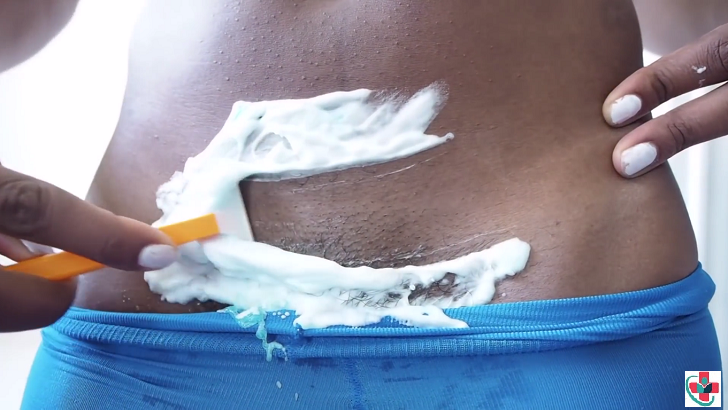 These days many women shave off their pubic hair because they believe it is more hygienic to do so. They think having it bushy down there will make them look unkempt and unclean.
These days many women shave off their pubic hair because they believe it is more hygienic to do so. They think having it bushy down there will make them look unkempt and unclean.Well, here is some news for you; many studies have shown that shaving off your pubic hair actually puts you at health risk. Not only does the hair stop viruses and bacteria reaching genitalia, but it also acts as a cushion for the sensitive labia and vagina
Some have suggested that rather than shaving it off completely, you can consider trimming instead.
Here are some reasons you should stop shaving off your pubic hair, according to Dr. Vanessa Mackay, who is a member of the Royal College of Obstetricians and Gynaecologist in an interview with The Independent.
Keep this in mind before you use a razor down there...
☛Pubic hair offers a natural barrier to keep things clean, to decrease contact with viruses and bacteria, and to protect the tender skin of the area.☛While protecting against diseases and skin problems, pubic hair prevents foreign particles like dust and pathogenic bacteria from entering the body.
☛Pubic hair also helps to control the moisture of the area which decreases the chances of yeast infections.
☛Pubic hair also acts as a soft cushion for the sensitive skin of the labia and vagina.
☛Other complications like vaginal and vulvar infections, inflammation of the hair follicles, abscesses, lacerations, and allergic reactions can be caused by the shaved pubic hair.
☛Tiny wounds left by shaving, along with the warm and moist genital area, create a happy culture medium for bacteria to grow in.
☛If you shave your pubic hair, you are putting yourself at a higher risk of contracting genital warts, although pubic hair doesn’t completely prevent it, it helps avoid skin on skin contact with someone who may already have it.
☛Removing pubic hair also irritates and inflames the hair follicles left behind, leaving microscopic open wounds.
☛Hair removal can increase your chance of contracting an STI because remove the hair affects the skin membrane, making it easier for bacteria to enter the body.
Why might a woman remove her pubic hair?
Some women consider pubic hair removal to be good hygiene. They feel cleaner without it. The practice may also make a woman feel more feminine, as removing some or all of her pubic hair becomes part of her grooming routine, along with removing hair from her face, legs, and underarms.Other women remove pubic hair to make themselves more attractive to a sexual partner, who may prefer this look. Some partners may be more likely to perform oral sex on a woman if she has removed some or all of her pubic hair. Or, a woman may feel more sexually confident if she has less hair on her genitals.
Removing pubic hair may seem to be trendy, but that doesn’t mean you have to do it. However, if you do decide to remove your pubic hair, be sure it’s your decision and do it safely. If you have a chronic disease, ask your health care provider if there are special reasons why you shouldn’t shave your pubic hair. Call your health care provider if you develop folliculitis or symptoms of infection.
What are some common pubic hair removal methods for women?
The usual methods for removing pubic hair include the following:- Shaving. Women may trim their pubic hair first, then use shaving cream and a razor. Usually, they must repeat this process every few days.
- Depilatories. These over-the-counter products use chemicals to remove hair just below the skin. The effect may last for a couple of days.
- Waxing. Often done at a salon, waxing involves applying warm wax to the area, placing a cloth on top, then pulling the cloth off once the wax hardens. This procedure removes hair from the root and the hair does not grow back as quickly as with shaving. However, some women find this process painful.
- Laser hair removal. This procedure usually occurs over several appointments and involves aiming a laser beam at the pubic area. The beam destroys the hair follicle with heat. Women having laser hair removal must use protective eyewear throughout the procedure.
- Electrolysis. This method is usually the longest-lasting but can take up to 25 sessions. With electrolysis, a needle-shaped electrode is inserted into each hair follicle and destroys the hair root with an electric current.